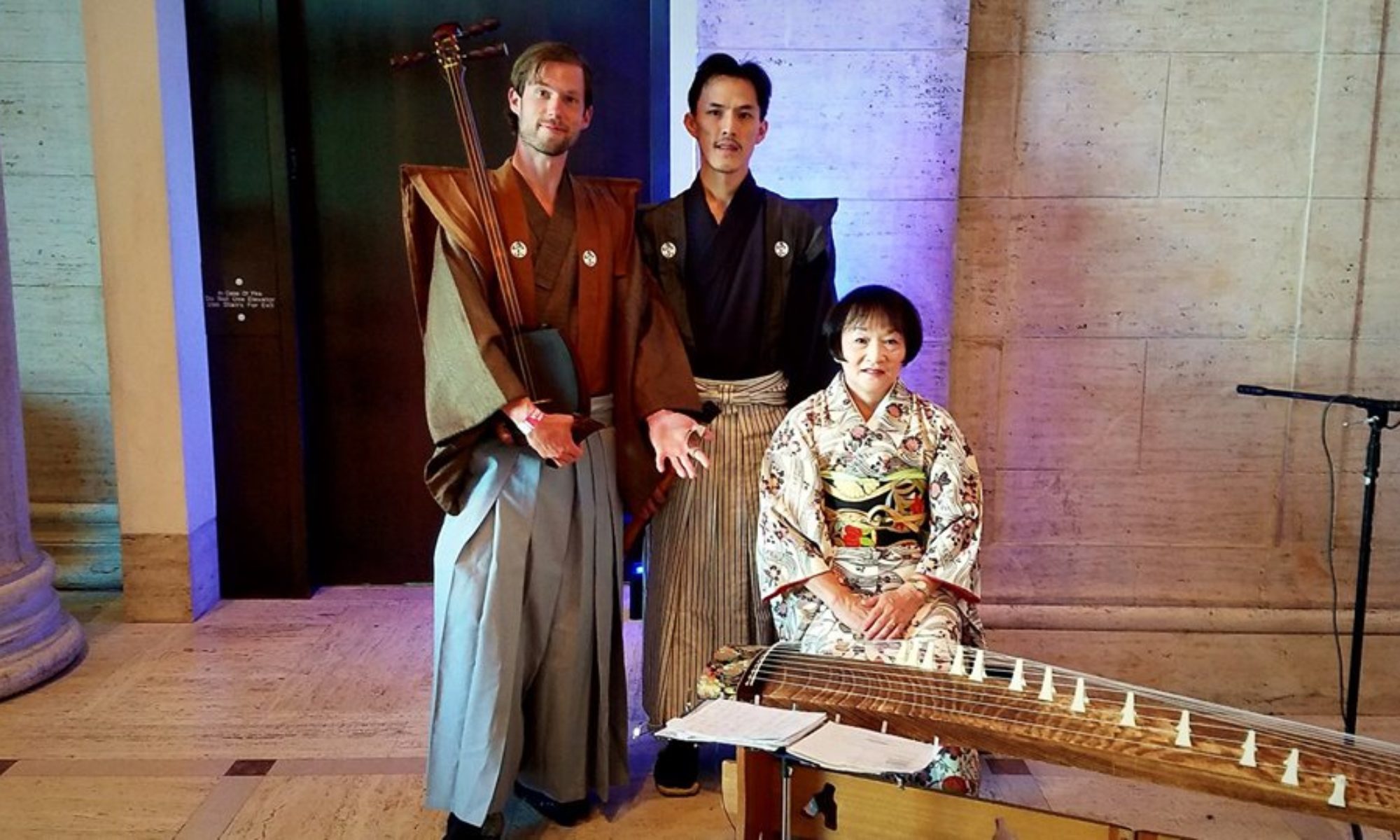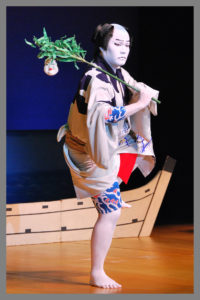Bandō Hirohichiro 坂東拡七郎began his Japanese classical dance training at the age of three under Bandō Ryū. A native of Southern California, under the wishes of his grandmother who stressed the importance of keeping the traditions of Japan alive in America, he has traveled throughout the United States performing and introducing the art of Japanese classical dance at various venues. He attained his natori, equivalent to a Master’s degree, at the age of seventeen, when Bandō Mitsugorō IX granted him the professional name of Hirohichirō. In addition to his career as a professional Japanese classical dancer, he is the first non-Japanese to become a professional Kabuki actor in the theater’s history. He is apprenticed to National Living Treasure, Sakata Tōjūrō and performs under the name of Nakamura Gankyō. During his full-time career as a Kabuki actor, Hirohichirō was fortunate to enough to be trained by the leading headmasters of various Japanese classical dance schools in Japan, where he was introduced to different interpretations, styles, and evolving techniques of Japanese classical dance. In addition, to Kabuki acting and Japanese classical dance, Hirohichirō has been trained in a variety of traditional arts such as nagauta (singing and shamisen), koto, jiuta, tokiwazu, gidayū, narimono, sadō, kadō, wasai, shishū to only list a few.
As part of Tōjūrō’s vision of introducing the art of Kabuki to the world, Hirohichirō completed his Master’s from the University of Southern California (2010) and his Ph.D from the University of California-Los Angeles (2019), specializing in Classical Japanese literature, culture, and the performing arts. He is a Fulbright Scholar (2013-2015) where he was a visiting scholar at Waseda University and Tokyo University. In addition of teaching courses in premodern and contemporary Japanese literature and cultures at the university, he has starred in numerous Hollywood productions, the most recent in Netflix’s upcoming action film, Kate.
To share his passion of Japanese classical dance to the future generations in the United States, Hirohichirō was granted his shihan, equivalent to Ph.D, by Mitsugorō X in 2007. Hirohichirō then founded Bandō Ryū Kyō no Kai (坂東流 京の会) in 2008 opening studios throughout California. Currently, Hirohichirō has students spanning the United States and in Japan. In supporting Hirohichirō’s mission of introducing and educating future generations, Mitsugorō X bestowed upon Hirohichirō as one the official representative of Bandō Ryū to the United States. It is Hirohichiro’s hope to train future professional Japanese classical dancers who will be able to continue the traditions and teach future generations in the art form.
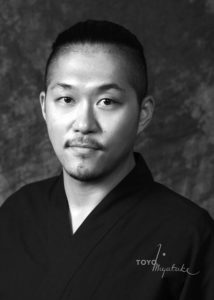 Kuniharu Yoshida (Kuni)
Kuniharu Yoshida (Kuni)
Kuniharu is a Japanese Calligrapher, Hip-hop Dancer, Teacher and is 1/4th of the concept-art collective In the Attic, based in Little Tokyo, Los Angeles. He collaborates with artists to combine sublime arts, merging traditional with the contemporary. Respect between different cultures is the foundation of Kuniharu’s unique work, designed to intertwine not just art but also audiences. He finds art is a great way to increase understanding amongst people of various backgrounds while communicating one’s culture in a simple and easy to understand manner.
Most notably, his works have been included in Tokyo Metropolitan Art Museum’s Uneo Art Exhibition with Tamayura-kai and Atelier Cosmos, he has done lectures at Netflix, and most recently was the Little Tokyo Service Center’s (LTSC), +LAB Artist in Resident, where his project First Street North won Best Documentary Short in the 2019 Asian Film Festival of Dallas.
Kuniharu Yoshida was born and raised in Tokyo, Japan. In 1990 at the age of six, he began to learn Japanese Calligraphy under Master Yoshiko Kawakita and Master Yoshitaro Yoshida, his grandfather. Nearly 19 years later, in 2009, Kuniharu visited Los Angeles, California for the first time. In 2012, he visited Los Angeles once again, staying for approximately three months. During this time he came to learn the history of Little Tokyo and decided to make Los Angeles his home base. Nearly a year later, he successfully moved to Los Angeles to call it home and pursue his career as a calligrapher and dancer.
 Kyle Abbott
Kyle Abbott
Kyle Abbott has dedicated over 14 years to playing and building shamisen. He is the author of the world’s first authoritative shamisen building/playing manual, ‘Shamisen of Japan’, and is the founder of Bachido. Bachido is the world’s first international shamisen community. Featuring hundreds of hours of educational resources, Kyle has spearheaded a global push to make shamisen instruction accessible for everyone. With over 3000 members worldwide, beginners and professional players unite together to connect, learn and inspire each other. Kyle has led international instructional camps (Japan, Berlin and California), has competed in Japan’s National Tsugaru Shamisen tournaments. In 2019, he received the Judge’s Special Award in the highest division at Hirosaki World Tsugaru Shamisen Tournament. In 2015, Kyle assisted in the animated movie ‘Kubo and the Two Strings’. The animators of the film wanted to see how shamisen was played live, so the executive producers invited Kyle to their studio, where they filmed him playing shamisen for the animators to record and observe. Kyle also recorded and produced two ‘Monsters of Shamisen’ albums (‘Stellar’ and‘Resonance’), and also recorded and produced two solo albums, The Cuckoo and Frosty: A Retrospective Christmas. Kyle also plays shakuhachi, mandolin, banjo, guitar, bass, and other stringed instruments. He practices Tuvan throat singing styles as well.
Su Bunjamin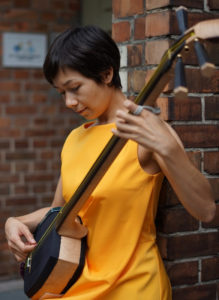
Su Bunjamin is the driving force of Germany’s newly emerged Tsugaru Shamisen scene. With her classical musical background in violin and piano, she fell deeply in love with the dynamic and thrilling sounds of Tsugaru Shamisen and is dedicated to spread her passion through performing and teaching. She is the co-founder and leader of Germany’s first and only Shamisen association that pursues a proactive approach to introducing the Shamisen andJapanese culture to a broader audience.
Brian Mitsuhiro Wong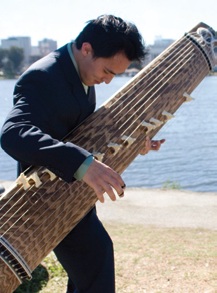
Brian Mitsuhiro Wong, an American of Japanese and Chinese descent, won the “Grand Prix” award for achieving the highest scores on his teaching examinations from the Sawai Soukyokuin Koto Conservatory in Tokyo, Japan in July 2006, surpassing many Japanese native candidates. Brian was tested in vocal and instrumental performance, classical and contemporary koto works, shamisen, Japanese music theory and music history, sight reading, sight singing, and tuning accuracy.
In December 2019, Brian became the second koto performer from outside of Japan to qualify as a contestant in the prestigious Kenjun Koto Competition in Kurume, Japan. (his mom was the first performer)
Brian continues a brilliant legacy of koto performance in America that spans three generations, and has roots in the internment camps of World War II. His mother, Shirley Kazuyo Muramoto, also a koto teacher and musician, taught Brian how to play the koto from the age of 4. At the age of 16, Brian attended a concert Madame Kazue Sawai. Sawai Sensei’s performance was dynamic and exciting. Brian was inspired by her performance, and decided to continue his studies at the Sawai Soukyokuin in Tokyo, Japan.
In June 2007, Brian also earned his Bachelor of Arts in Music Composition at California State University East Bay in Hayward, California. He has written works western and eastern instruments. Brian is also a jazz saxophonist. His musical mentors growing up were Khalil Shaheed and Ravi Abcarian, Dave Eshelman, Dann Zinn, Steve Parker, Michael Wirgler, Thom Kwaitkowski, his parents, grandparents and family friends.
Brian has traveled to Montreux, Umbria and Vienne Jazz Festivals in Europe with CSUEB. He has taught koto classes at UC Berkeley, and is an active composer. Brian performed at Yoshi’s Jazz Club with the Murasaki Ensemble, the CSUEB jazz ensembles, and with the Oaktown Jazz Workshop with Pete Escovedo. He has performed in concert with koto masters Kazue Sawai and Hikaru Sawai.
Isabella Kazuai Lew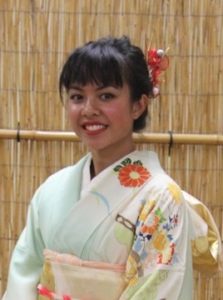
Isabella Kazuai Lew, an American of Japanese, Chinese, and Filipino descent, began taking koto lessons with Shirley Kazuyo Muramoto in 2005 as part of an after-school koto class program at Montclair Elementary School in Oakland. Right from the start, Isabella was an exceptional koto student, picking up techniques and songs very quickly. She continued private lessons from Muramoto Sensei and performed at local concerts and community events, including recitals and various Cherry Blossom festivals. In 2014, Isabella was awarded funding from the ACTA Alliance for California Traditional Arts with her teacher. That same year with help from this funding, Isabella attained her Shihan teaching credentials from the Chikushi Kai Koto Conservatory in Fukuoka, Japan, and attained the professional name of “Kazuai”. Although she does not speak much Japanese, she passed her tests with flying colors because music is the universal language.
Isabella Kazuai’s curriculum included training on classical as well as classical singing, traditional, contemporary, jazz and rock music on the koto. She has written her own arrangements for koto as well. In 2020, she started assisting Muramoto Sensei in teaching the Monday Koto Workshops being taught at the Oakland Buddhist Church until the shelter in place was ordered due to the corona virus. Through studying koto, Isabella has been able to learn much about Japanese culture and hopes to help preserve Japanese traditional arts for future generations to come.
Isabella also graduated from Cal Poly at San Luis Obispo in 2019 with a degree in civil engineering.
